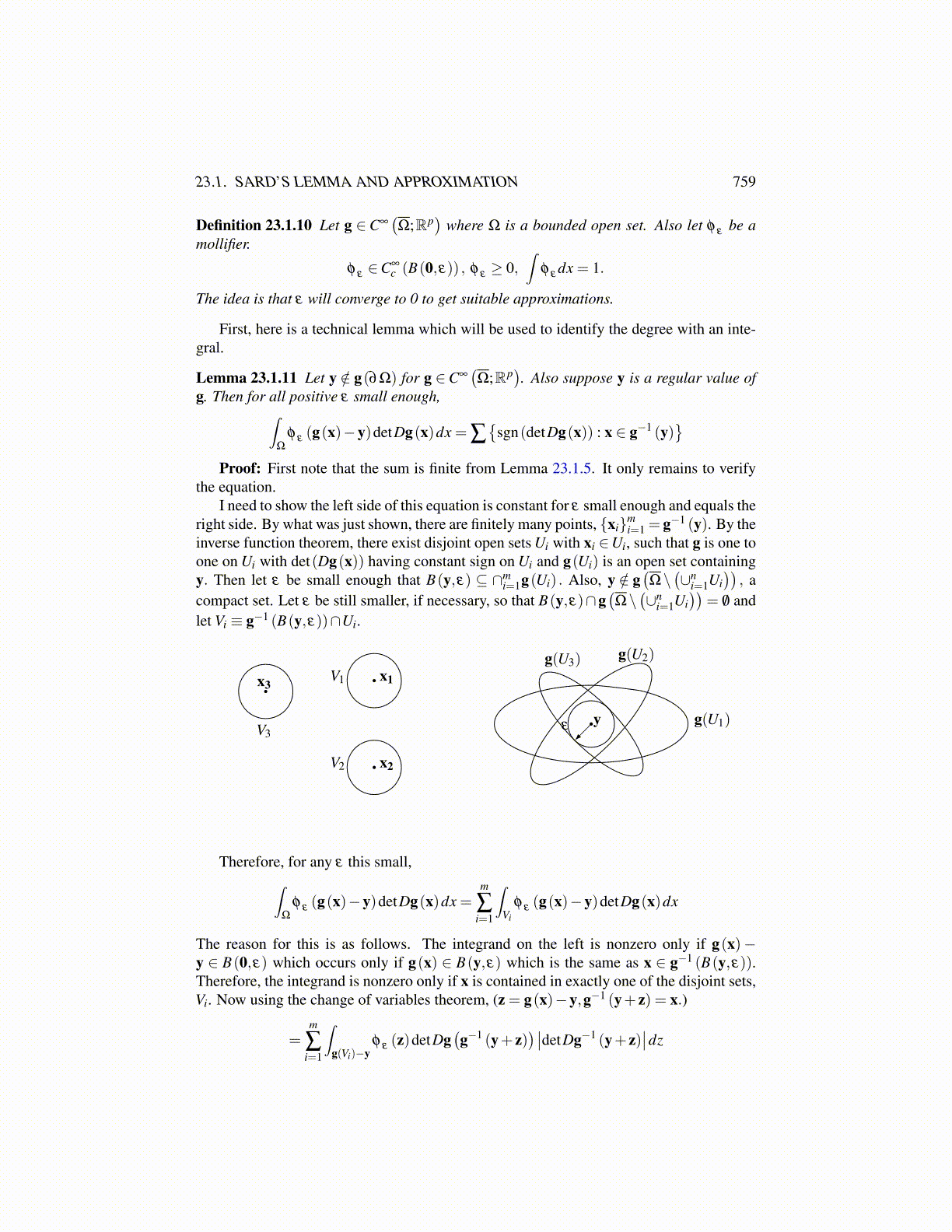
23.1. SARD’S LEMMA AND APPROXIMATION 759
Definition 23.1.10 Let g ∈ C∞(Ω;Rp
)where Ω is a bounded open set. Also let φ ε be a
mollifier.
φ ε ∈C∞c (B(0,ε)) , φ ε ≥ 0,
∫φ ε dx = 1.
The idea is that ε will converge to 0 to get suitable approximations.
First, here is a technical lemma which will be used to identify the degree with an inte-gral.
Lemma 23.1.11 Let y /∈ g(∂Ω) for g ∈C∞(Ω;Rp
). Also suppose y is a regular value of
g. Then for all positive ε small enough,∫Ω
φ ε (g(x)−y)detDg(x)dx = ∑{
sgn(detDg(x)) : x ∈ g−1 (y)}
Proof: First note that the sum is finite from Lemma 23.1.5. It only remains to verifythe equation.
I need to show the left side of this equation is constant for ε small enough and equals theright side. By what was just shown, there are finitely many points, {xi}m
i=1 = g−1 (y). By theinverse function theorem, there exist disjoint open sets Ui with xi ∈Ui, such that g is one toone on Ui with det(Dg(x)) having constant sign on Ui and g(Ui) is an open set containingy. Then let ε be small enough that B(y,ε) ⊆ ∩m
i=1g(Ui) . Also, y /∈ g(Ω\(∪n
i=1Ui))
, acompact set. Let ε be still smaller, if necessary, so that B(y,ε)∩g
(Ω\(∪n
i=1Ui))
= /0 andlet Vi ≡ g−1 (B(y,ε))∩Ui.
g(U2)g(U3)
g(U1)yε
x1
x2
x3V1
V2
V3
Therefore, for any ε this small,∫Ω
φ ε (g(x)−y)detDg(x)dx =m
∑i=1
∫Vi
φ ε (g(x)−y)detDg(x)dx
The reason for this is as follows. The integrand on the left is nonzero only if g(x)−y ∈ B(0,ε) which occurs only if g(x) ∈ B(y,ε) which is the same as x ∈ g−1 (B(y,ε)).Therefore, the integrand is nonzero only if x is contained in exactly one of the disjoint sets,Vi. Now using the change of variables theorem, (z = g(x)−y,g−1 (y+ z) = x.)
=m
∑i=1
∫g(Vi)−y
φ ε (z)detDg(g−1 (y+ z)
)∣∣detDg−1 (y+ z)∣∣dz